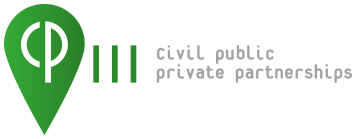Work packages

To address the defined objectives, the work in cp³ has been structured into five work packages (WPs): four thematic WPs (WP2, WP3, WP4, and WP5) which directly correspond to the defined objectives , and one work package (WP) that is dedicated to the management of the project (WP1).
WP1: Project management
WP1 is in charge of the overall scientific and technical as well as administrative management of the project. Main tasks include: to organize the kick-off meeting and further annual partner meetings, enable project internal communication and decision making, oversee, coordinate and monitor research activities, manage data collection and data storage, and organize reporting activities in the project.
WP2: Governance models
The main objective of WP2 is to identify, describe, and analyze existing governance models linked to the management of agro-ecosystems in the case studies in regard to how they can mitigate institutional misfit. The main focus is on collaborative governance approaches (in contrast to market-based or hierarchical state-induced command and control approaches).
Another specific task of WP2 is the production of a movie documentary for one or two of the case studies, provided there is interest in the case studies to do so. For the movie production it is planned to actively involve the local stakeholders to capture their perspectives on how their livelihood is linked to ecosystem services provision.
WP3: Production practices
The focus of WP3 is on the identification, description and analysis of currently applied land use related production practices in agro-ecosystem management. The production practices will be described at farm level involving information on the types of produced goods and production intensities in relation to site conditions. Described production practices will be used for the analysis of their impacts on ES provisioning and biodiversity (which includes the analysis of existing synergies and trade-offs) in cooperation with WP4.
WP4: Ecosystem services
The main objective of WP4 is to develop a comprehensive overview of ES provided by and needed to sustain different agro-ecosystems in rural landscapes. For specific ES, the relevant spatial and temporal scales are assessed, as well as their directional flows across the landscape, including the identification of respective providers and beneficiaries. In this regard, WP4 will investigate the connection between farm level production practices and ES provisioning and biodiversity at the landscape level.
WP5: Governance recommendations
The main objective of WP5 is to synthesize the knowledge gained in WP2, WP3 and WP4, and to organize the development of different dissemination materials and formats. These provide information and recommendations for different stakeholder groups in governance (such as policy makers, market actors, civil society initiatives, the farming community), as well as the scientific community, and the general public. Dissemination materials and formats include, for instance, a project flyer, factsheets introducing the different case studies, the movie documentary produced together with stakeholders, scientific publications, a policy brief, presentations at conferences, as well as organized project events such as stakeholder workshops or conference sessions, and the project website itself.
Links between work packages
Overall, the WP structure of the whole project is adjusted to the following rationale: The governance models (which make up the ‘institutional landscape’ in a given landscape) are meant to steer and influence land uses and the related production practices for the better management of agro-ecosystems in rural landscapes (link from WP2 to WP3). Land use and production practices (which form the ‘human landscape’, i.e. the part of the landscape that is under actual human management) then determine the ecosystem services (ES) they can deliver and are dependent upon in the wider context of the ‘physical landscape’, which encompasses managed and unmanaged areas of the landscape (link from WP3 to WP4). Unmet demand and preferences will inflict conflicts over ES. The perceived institutional misfit then will call for adaptation in governance (link from WP4 to WP2).
This rationale is mirrored in the WP structure of the project. Results of WP2, WP3 and WP4 then connect and flow into WP5 where they are prepared for the different target audiences of the project. WP1 as project management procures the supportive structures to all thematic WP for data management and continuous communication and decision making.

